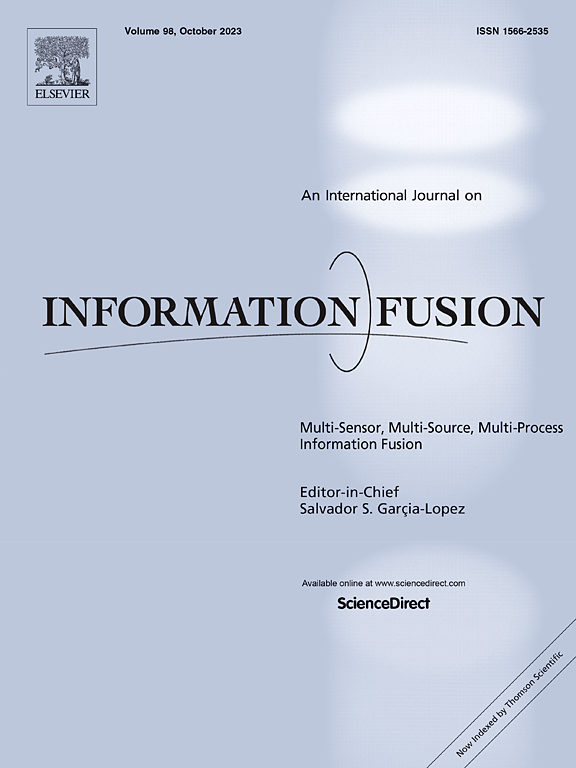CertainTTA: Estimating uncertainty for test-time adaptation on medical image segmentation
IF 14.7
1区 计算机科学
Q1 COMPUTER SCIENCE, ARTIFICIAL INTELLIGENCE
引用次数: 0
Abstract
Cross-site distribution shift in medical images is a major factor causing model performance degradation, significantly challenging the deployment of pre-trained semantic segmentation models for clinical adoption. In this paper, we propose a novel framework, CertainTTA, to maximally exploit a pretrained model for test time adaptation. Firstly, we leverage variational inference and innovatively construct a probabilistic source model by incorporating Gaussian priors on the network parameters of the pre-trained source model. A predictive posterior distribution is computed at test time for the target image, which is then used to estimate the uncertainty of the target prediction based on entropy measure. In the meantime, a novel adaptive score is also constructed to measure the source model uncertainty on its adaptability for a target image based on the mutual information between the target prediction and the target input. Both output uncertainty and model uncertainty are incorporated at test time, where the former is minimized against a low-frequency prompt which optimally reduces the domain shift at image level, and the latter is used to select the target prediction with the best model adaptability during the prompt optimization process. CertainTTA overcomes the weakness of existing entropy minimization methods where the latter becomes unreliable under biased target scenarios and tends to yield overconfident predictions. To the best of our knowledge, CertainTTA also serves as the first solution to trace model adaptability in a CTTA setting. We conduct TTA and CTTA experiments on three medical semantic segmentation benchmarks, achieving average improvements of 2.94%, 4.06%, and 3.49% under the TTA scenario over the state-of-the-art method on the OD/OC, polyp, and MRI Prostate segmentation datasets, respectively.
医学图像分割测试时间自适应的不确定度估计
医学图像中的跨站点分布变化是导致模型性能下降的主要因素,这对临床应用预训练的语义分割模型的部署构成了重大挑战。在本文中,我们提出了一个新的框架,一定tta,以最大限度地利用一个预训练模型的测试时间适应。首先,我们利用变分推理,通过在预训练的源模型的网络参数上加入高斯先验,创新地构建了一个概率源模型。在测试时计算目标图像的预测后验分布,然后利用该后验分布估计基于熵测度的目标预测的不确定性。同时,基于目标预测和目标输入之间的互信息,构造了一种新的自适应分数来衡量源模型对目标图像的自适应性的不确定性。在测试时结合了输出不确定性和模型不确定性,其中前者在低频提示下最小化,从而在图像级上最优地减小域移,后者用于在提示优化过程中选择具有最佳模型适应性的目标预测。suretta克服了现有熵最小化方法的弱点,后者在有偏见的目标情景下变得不可靠,并且倾向于产生过度自信的预测。据我们所知,在CTTA设置中,suretta也是第一个跟踪模型适应性的解决方案。我们在三个医学语义分割基准上进行了TTA和CTTA实验,在TTA场景下,与最先进的方法相比,在OD/OC、息肉和MRI前列腺分割数据集上,平均DSC分别提高了2.94%、4.06%和3.49%。
本文章由计算机程序翻译,如有差异,请以英文原文为准。
求助全文
约1分钟内获得全文
求助全文
来源期刊

Information Fusion
工程技术-计算机:理论方法
CiteScore
33.20
自引率
4.30%
发文量
161
审稿时长
7.9 months
期刊介绍:
Information Fusion serves as a central platform for showcasing advancements in multi-sensor, multi-source, multi-process information fusion, fostering collaboration among diverse disciplines driving its progress. It is the leading outlet for sharing research and development in this field, focusing on architectures, algorithms, and applications. Papers dealing with fundamental theoretical analyses as well as those demonstrating their application to real-world problems will be welcome.
 求助内容:
求助内容: 应助结果提醒方式:
应助结果提醒方式:


